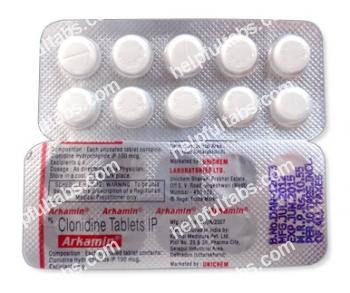








| Country | Shipping method | Delivery time | Price | |
|
|
 Delivery Delivery |
14-21 days | 10$ | Tracking# available in 4 days |
 Delivery Delivery |
9-14 days | 30$ | Tracking# available in 2 days |
Clonidine can be taken orally or applied as patches on the skin to treat high blood pressure. It works by altering the concentration of certain chemicals in the blood and stimulating alpha2-adrenoceptors in the brain stem. This reduces the transmission of signals from the brain to other parts of the body, leading to decreased peripheral resistance, renal vascular resistance, heart rate, and blood pressure.
Clonidine is typically taken twice daily, with the dosage adjusted based on the patient's blood pressure response. It should only be used if prescribed by a physician. For patches, apply them to a hairless area on the upper arm or torso, replacing them every 7 days. Rotate the application site with each new patch.
Avoid alcohol consumption while using Clonidine. Be cautious when driving or performing tasks that require high concentration.
Seek immediate medical attention if any of these side effects occur.
If you miss a dose, take it as soon as you remember. If it's almost time for your next dose, skip the missed dose. Do not take an extra dose to compensate.
If you suspect an overdose (symptoms include severe headache, blurred vision, anxiety, confusion, chest pain, fainting, cold feeling, or slow heart rate), seek immediate medical help.
Store Clonidine tablets and patches at room temperature (15-30°C or 59-86°F) in a light-resistant container, away from moisture.
The information provided is general and does not cover all directions, drug interactions, or precautions. It should not be used for self-treatment or self-diagnosis. Always consult your healthcare provider for specific instructions. We disclaim any reliability of this information and are not responsible for any direct, indirect, or consequential damages resulting from its use.